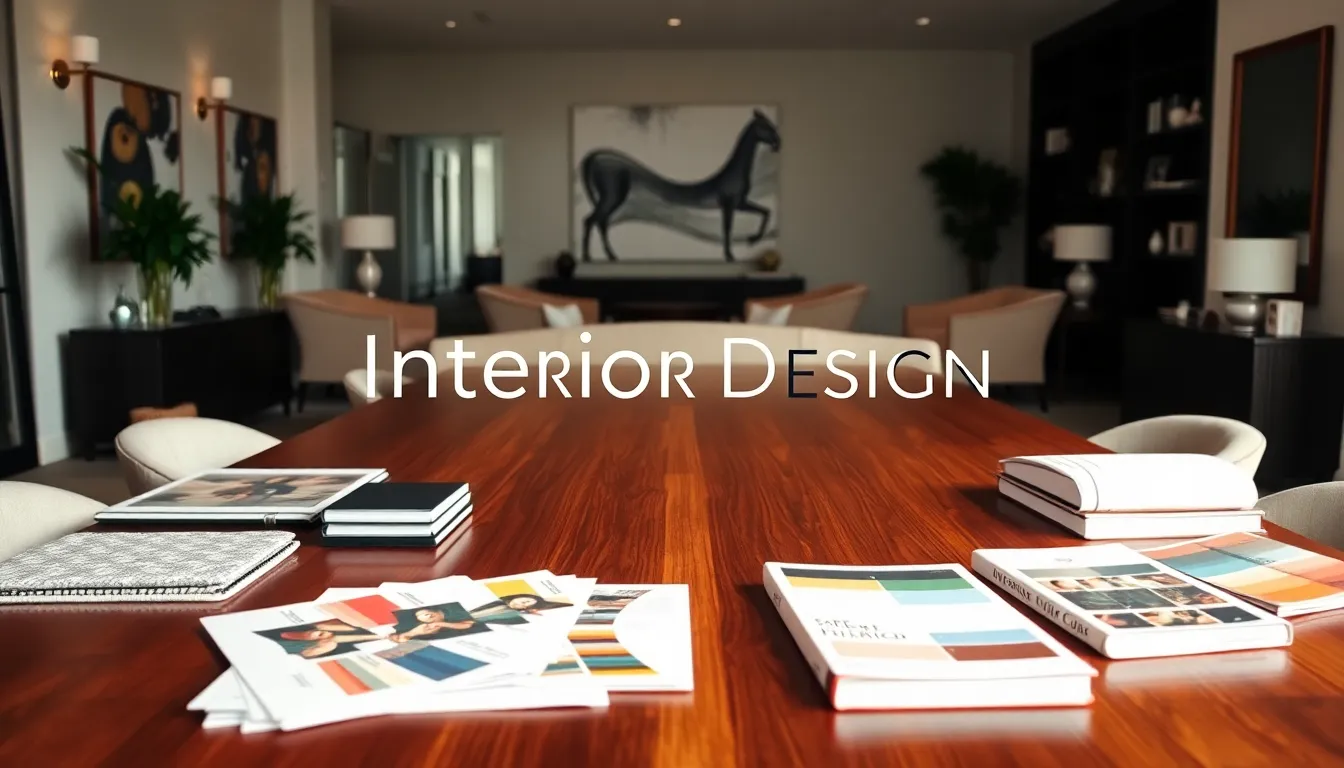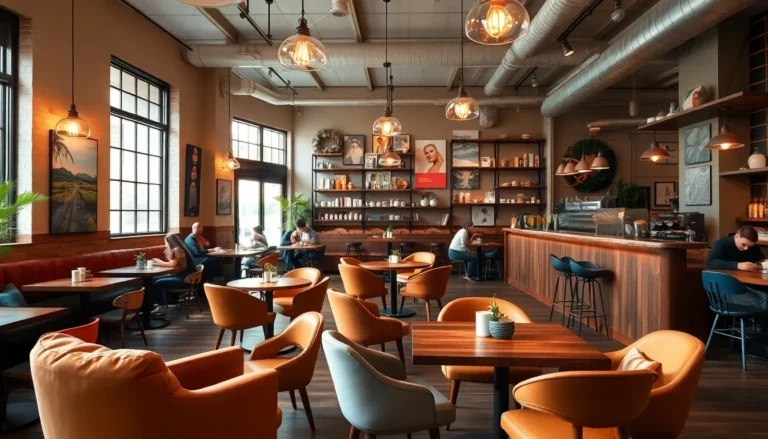Table of Contents
ToggleWhen it comes to interior design, a picture might be worth a thousand words, but a logo? That’s like having an entire novel on your shelf. The right logo can communicate your brand’s essence faster than you can say “design dilemma.” It’s not just about pretty aesthetics: it’s about creating a first impression that resonates. Curious about how that works? Buckle up as we jump into the world of interior design logos, where style meets identity and creativity knows no bounds.
Understanding the Importance of a Logo in Interior Design

In the competitive realm of interior design, a logo serves as the cornerstone of a brand’s identity. It’s often the first thing potential clients see, and let’s face it: we all judge a book by its cover. A well-crafted logo not only encapsulates a designer’s unique style but also builds credibility. Think of it as a visual handshake.
Also, an effective logo distinguishes a designer from the myriad options available in the market. Just like a beautifully arranged room showcases design prowess, a polished logo reflects professionalism. It pulls clients in, inviting them to explore the artistry the designer offers. If the logo is forgettable, a brand risks being overlooked altogether. This makes understanding logo significance in interior design more than a trivial pursuit: it’s a strategy for success.
Elements of Effective Logo Design
Diving into effective logo design entails considering several crucial elements. First, simplicity reigns supreme. A cluttered logo can confuse potential clients, while a simple design is easily recognizable and versatile. Think of Apple’s logo: its clean lines speak volumes.
Next, consider how memorable the logo is. A standout logo sticks in the minds of clients like a catchy song. Then there’s versatility, ensure your design works well in different formats and sizes, whether it’s on business cards or billboards. A logo should be adaptable: think of it as the go-to outfit for various occasions.
Finally, relevance ties everything together. The logo should reflect the interior design style the designer embodies, whether it’s modern minimalism, vintage charm, or somewhere in between. The right logo resonates with the target audience and speaks their language.
Logo Ideas Inspired by Different Interior Design Styles
When seeking inspiration for unique logos, exploring various interior design styles can be incredibly fruitful. For instance, a mid-century modern logo might feature clean lines and geometric shapes, evoking a sense of nostalgia while remaining contemporary.
On the other hand, a bohemian logo could incorporate earthy colors and playful patterns, allowing freedom of expression and creativity to shine through. If a designer leans towards industrial design, combining raw textures with sleek fonts can result in a logo that conveys strength and authenticity.
Classic styles could benefit from elegant scripts or timeless serif fonts, while eclectic designs may incorporate mixed elements, showcasing versatility and a rich tapestry of influences. This diversity in logo design ensures that every designer can find a concept that truly represents their vision.
Color Palettes and Typography for Interior Design Logos
Color palettes and typography play pivotal roles in logo design. Colors evoke emotions: for instance, blue can convey calmness while red communicates energy. Choosing the right color palette aligns the logo with the brand’s core message.
Typography should harmonize with the overall logo. A sleek modern font can resonate well with contemporary designers, while a ornate serif typeface might appeal to those favoring classic styles. Combining typography and color effectively creates a cohesive look.
Also, consider the psychology behind colors. Green often symbolizes growth and renewal, ideal for sustainable designers, while black speaks to luxury and elegance. So, having a clear understanding of both color and typography is essential in crafting an impactful logo.
Creating a Memorable Logo: Tips and Tricks
Creating a memorable logo may seem daunting, yet it can be simplified with a few tried-and-true tips. Start with brainstorming concepts that embody your design philosophy. Sketching freely helps generate ideas before narrowing down to solid options.
Keep in mind that less is often more. Aim for a design that’s functional yet beautiful. Incorporating a unique shape or a subtle, symbolic element can make the logo stand out. Also, ensure that it communicates effectively, reflecting the essence of the brand.
Gather feedback. Present logo concepts to colleagues or friends, fresh eyes can provide invaluable insights. Iteration is key in the design process. After all, even the best logos underwent countless revisions before reaching their final form.
Showcasing Your Logo: Application Examples
Once the logo is designed, it’s vital to showcase it effectively across various channels. Consider how it appears on business cards, brochures, and websites. Consistency is crucial: the way the logo translates across platforms impacts brand recognition.
Social media gives designers a fantastic opportunity to make their logos shine. Posting branded content that highlights projects while incorporating the logo effectively connects the audience to the designer’s identity. Also, consider branded merchandise or stationery that features the logo. These applications serve not only functional purposes but also keep the logo front and center in clients’ minds.




